Students in the Kitchen: Pizza Napoletana (Ep.1)
Every student who goes on a year abroad with Erasmus, will sooner or later have to make a crucial decision: order takeaways or stop buying fast food. But standing in the kitchen, a thousand questions and doubts plague students the world over: how much salt do I have to add? How do I cook an egg? Do I have to boil water to cook pasta?
Today I decided to start a new series, with the noble aim to offer you kitchen survival tips so you don't go hungry, and most of all to save you from calling our mutual (and expensive) friend, Ubereats.
Naples born and bred, I felt a great nostalgia for pizza during my year abroad in Coimbra and I was very keen to make one. There are no pizzerias in Coimbra and since I had an oven, I decided to make my own; this is the result. It was so tempting that couldn't resist trying it, even before I had snapped a photo!
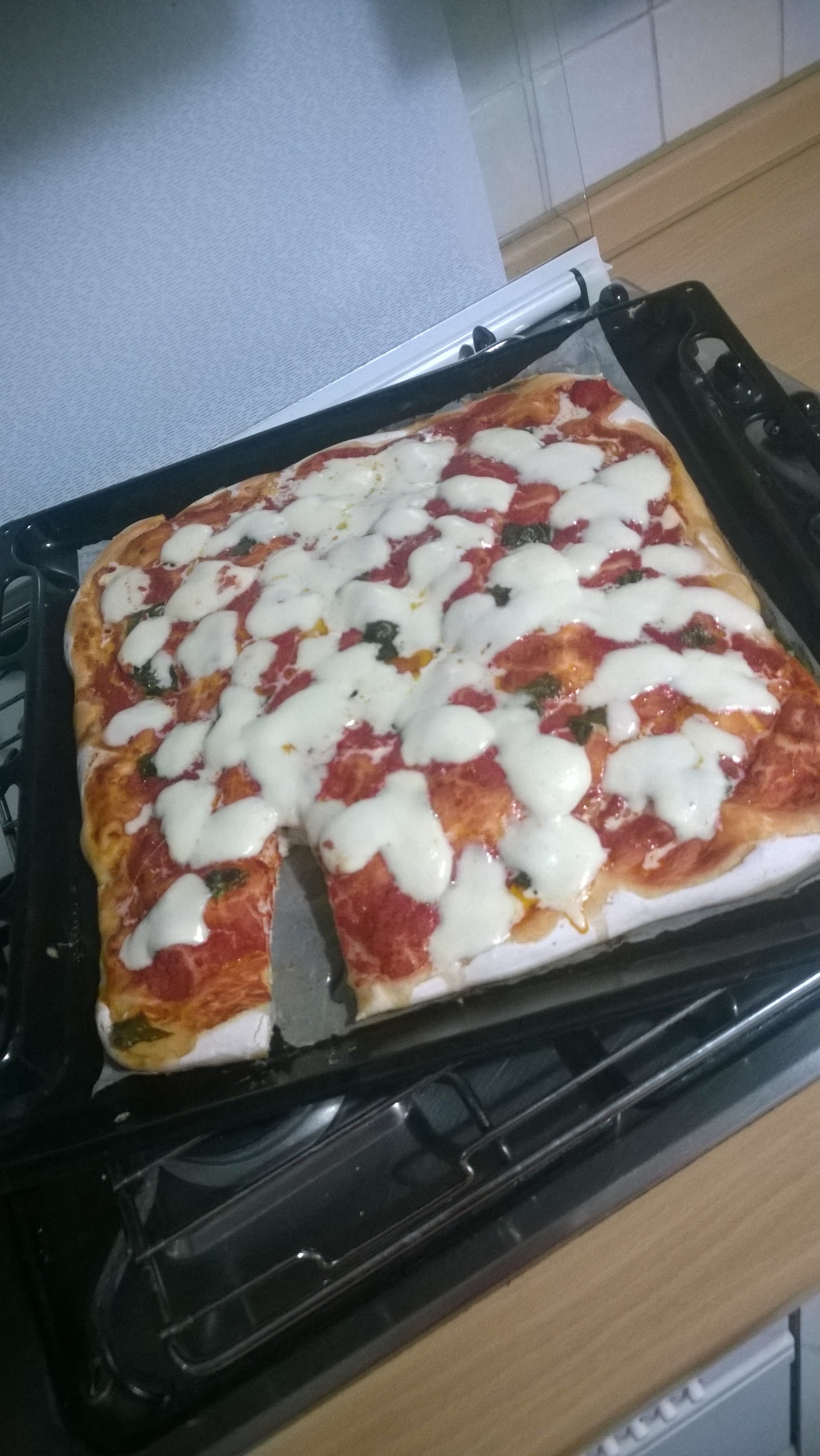
It doesn't look anything like a traditional pizza that you would find in a pizzeria - which are usually cooked in wood-fired ovens. But the recipe I am going to share with you makes a genuine Neapolitan homemade pizza. It is simple, fast and makes a great pizza.
Ingredients
- 500g plain flour
- 5g fresh brewer's yeast
- Salt, to taste
- Oil
- Water
- Toppings of your choice
The first step is to start off the yeast, which will help the pizza dough rise. Sieve the flour into a large bowl. Make a hole in the centre and pour in some water, salt and yeast.
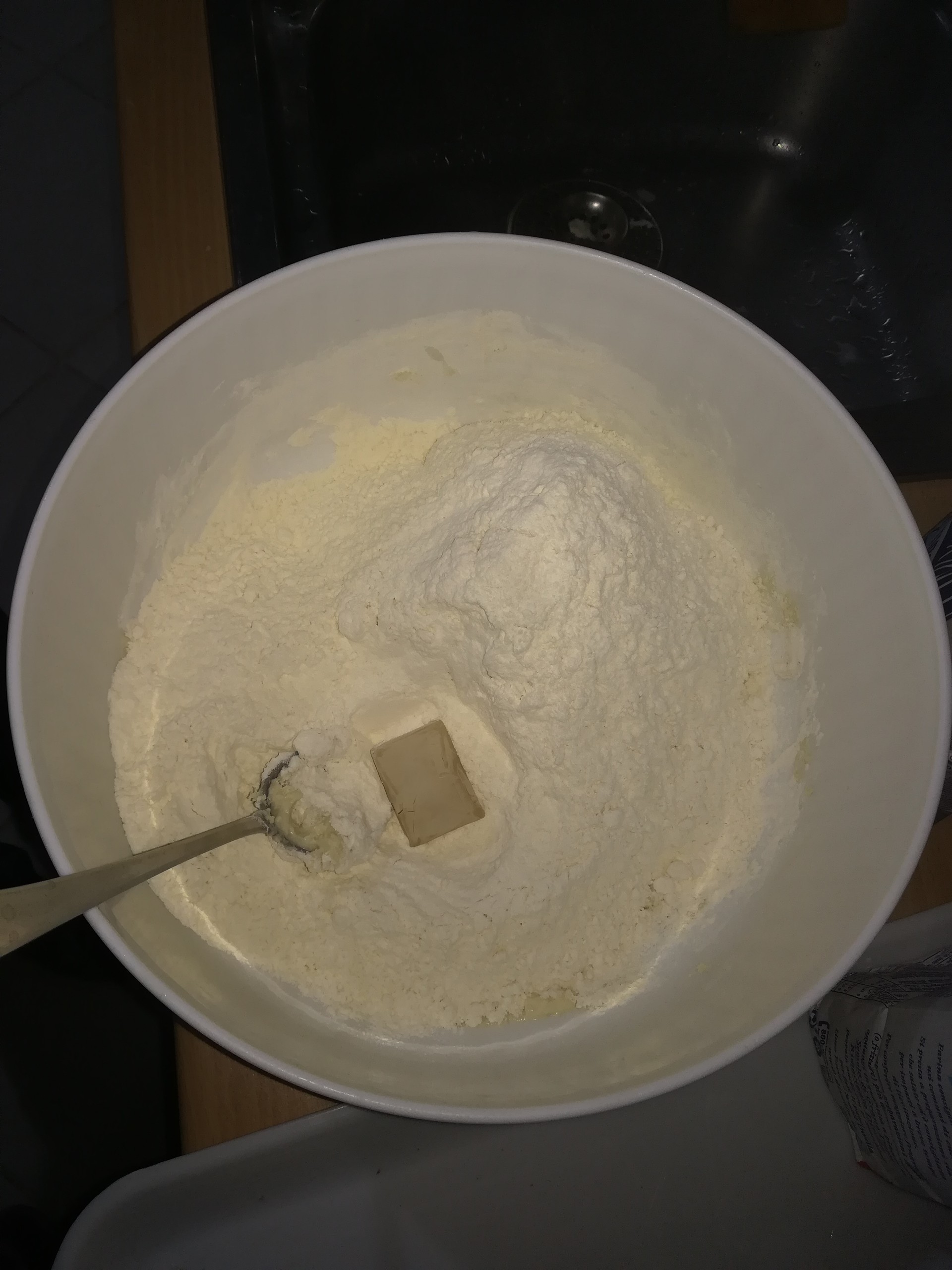
Using a spoon or even your hands, crumble the yeast into tiny pieces and mix well with the rest of the ingredients, as in the photo below.

If the dough turns out dry and unworkable, add a little more lukewarm water and knead it again, ideally now using your hands. Gradually the dough will become sticky - if it's too sticky to knead, add more flour a little at a time until it has reached the right consistency. When the dough has absorbed the water, you should have a soft and slightly sticky dough, like the one in the photo below.
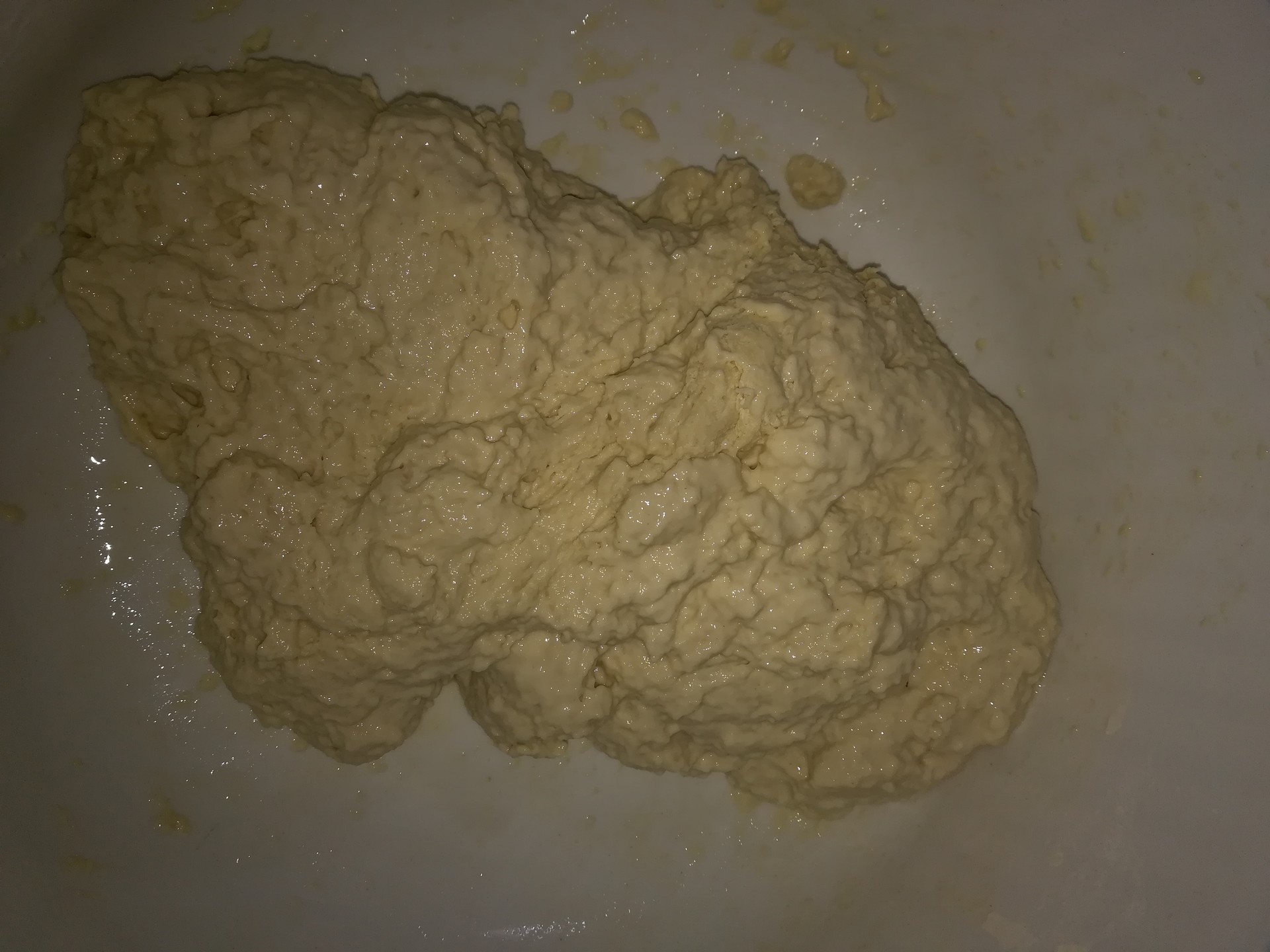
Form the dough into a ball and leave it to rise, covering it with a clean towel, or - if it is very cold - with a blanket. The dough should be kept warm to help it rise properly. As you can see in the following photo, after being left to rise, the dough should have doubled in size. It should take around an hour and a half to rise, maybe even two hours. Using a wet knife you can also cut a cross in the top of the dough, which will help it to rise better, creating a larger surface area.
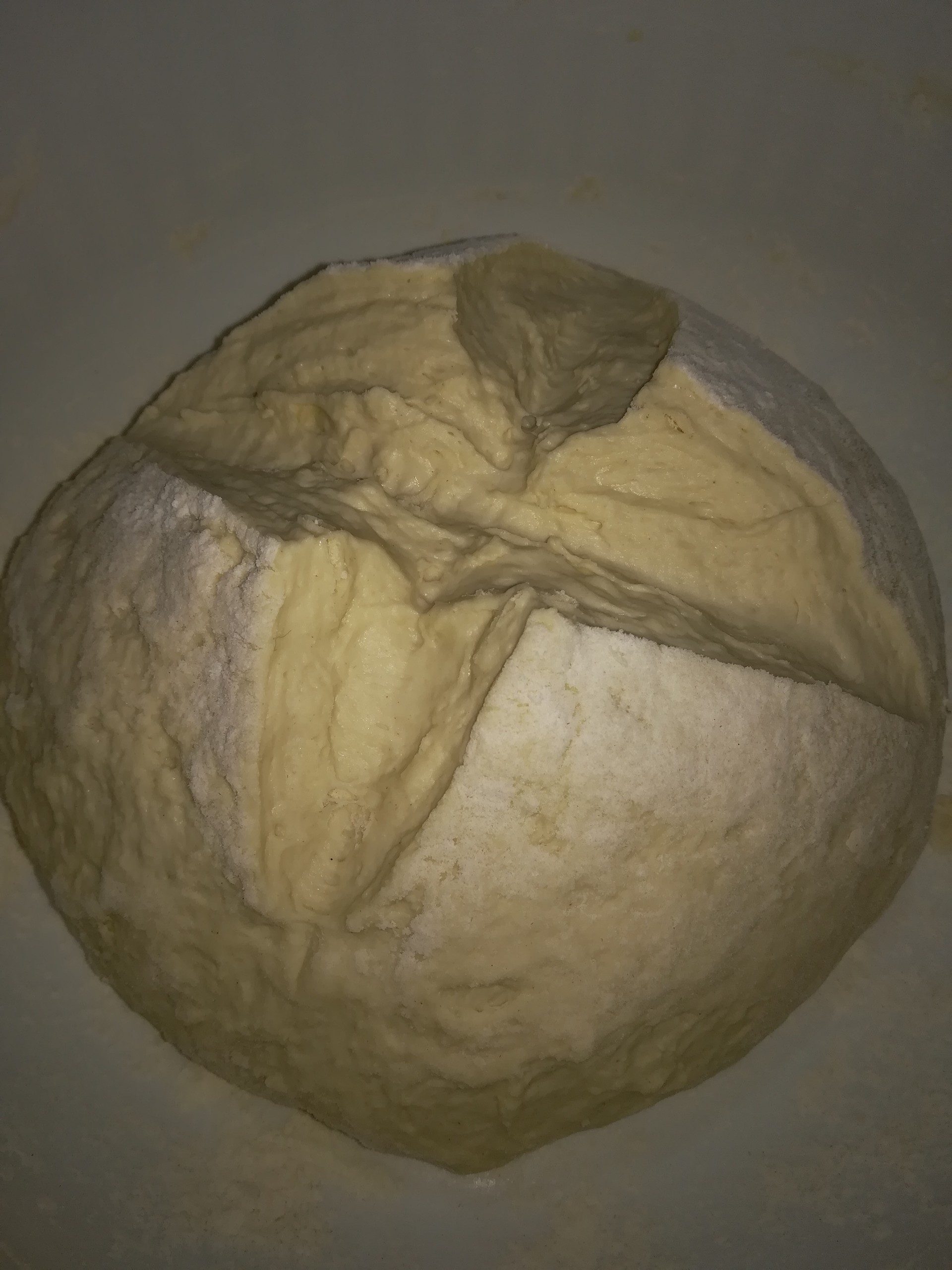
Preheat the oven to 180 degrees celsius, and switch off again. Once the dough has doubled in size, you can start to spread the dough in the tray. Oil both the tray and your hands, and use your hands to spread the dough in the tray, taking care to distribute it evenly across the base.
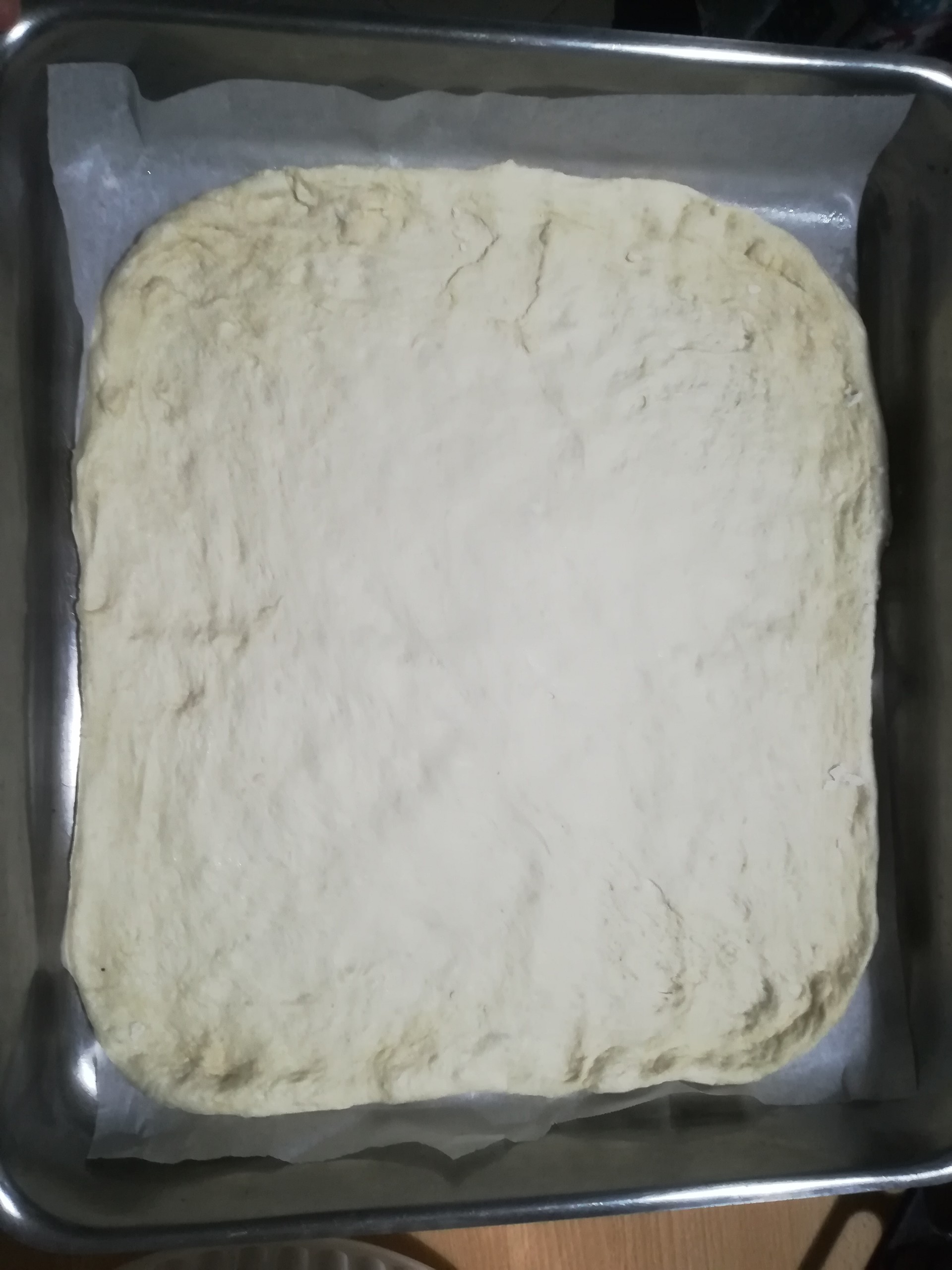
Once the dough is rolled out, leave it to rise for another 30 minutes in the preheated but switch-off oven. Once risen, you can prepare your toppings.
During my year abroad I prepared a variety of different pizzas, including a marinara, margherita and pizza with potatoes. Being from Naples, I am particularly partial to a margherita, but even more so to a marinara - a little-known pizza but an absolute must if you want to experience a bit of Neapolitan culinary culture.
To make a marinara pizza, simply pour tomatoes over the base, drizzle over some olive oil, a pinch of salt and sprinkle oregano, as in the following photo.
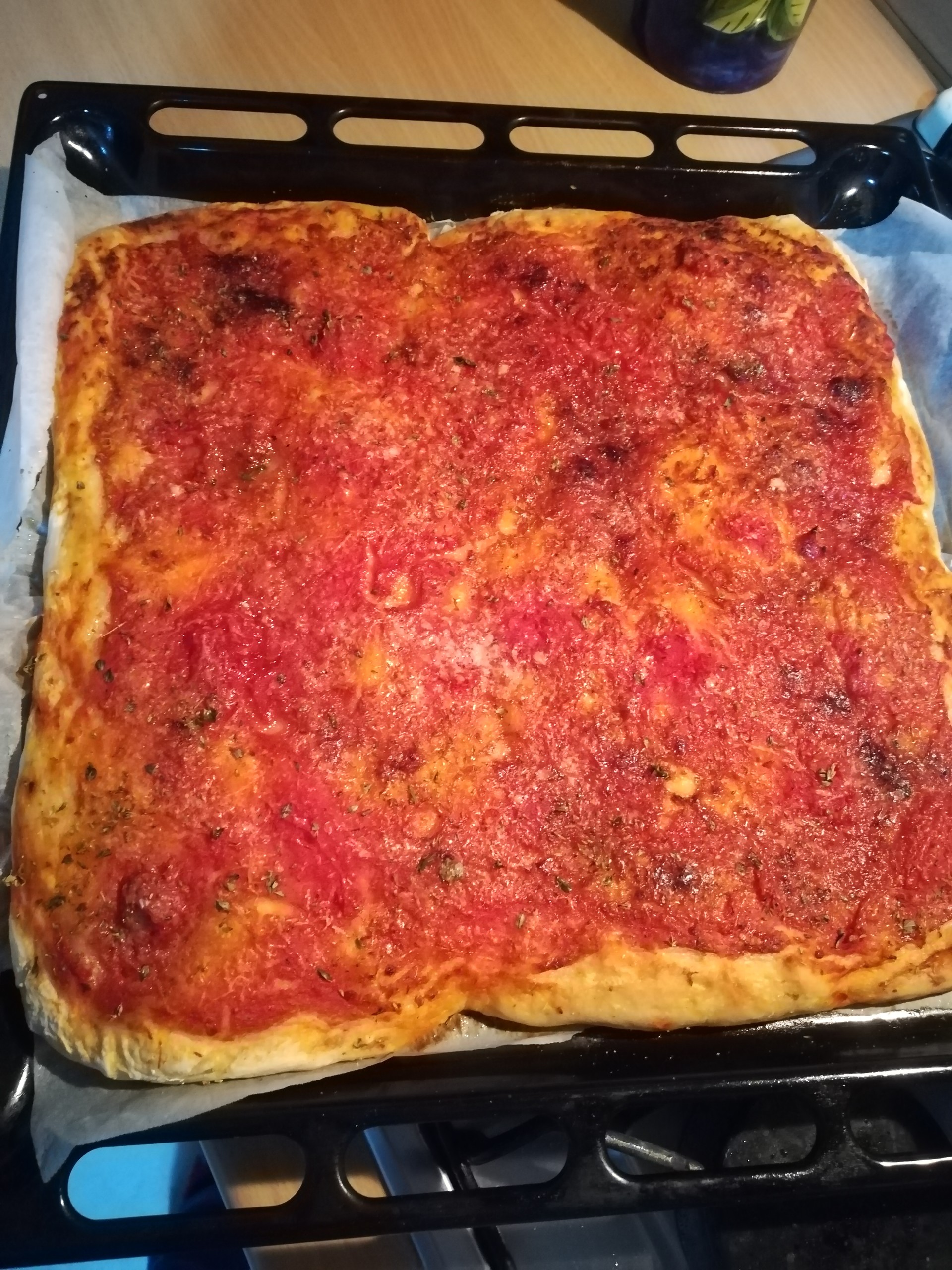
To make a pizza with potato, spread cooking cream* over the base, and cover it with fine slices of potato and sprinkle rosemary over the top. Sprinkle with salt and drizzle with olive oil.
*Note: In Italy you can find panna da cucina, which is perfect for this pizza. In other countries you will have to make do with what you can find. 'Panna da cucina' is fairly thick but less fatty than whipping creams. In the UK, extra thick double cream would do the job. Alternatively, you could try sour cream as a reasonable alternative, or even cream cheese if you can't find anything more suitable! Experiment and have fun!
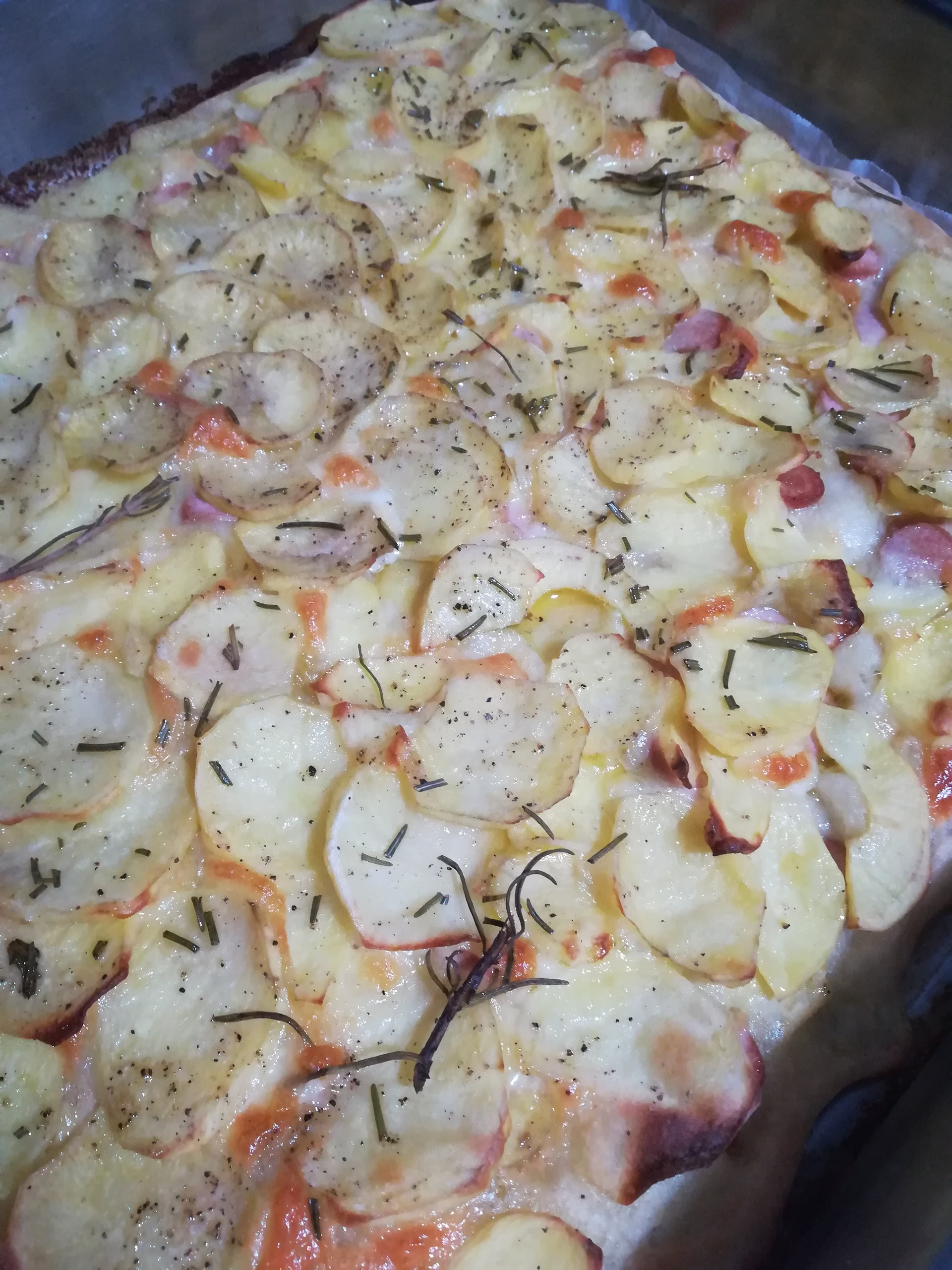
Heat your oven to 200 degrees celsius. Once you have covered your pizza with your chosen topping, cook in the oven for about 25 minutes. Using a fan oven you can cook two pizzas simultaneously at this temperature.
I made pizza many times for my housemates; normally I would make pizza at the weekends or for Erasmus dinners, and always got compliments.
Come on guys, it's time to get in the kitchen!
Photo gallery
Content available in other languages
Want to have your own Erasmus blog?
If you are experiencing living abroad, you're an avid traveller or want to promote the city where you live... create your own blog and share your adventures!
I want to create my Erasmus blog! →











Comments (0 comments)